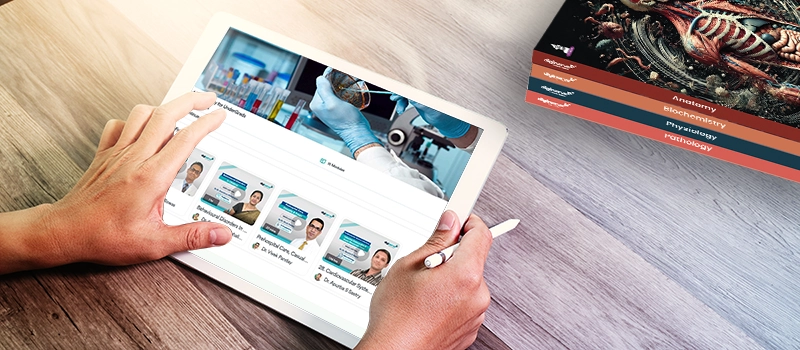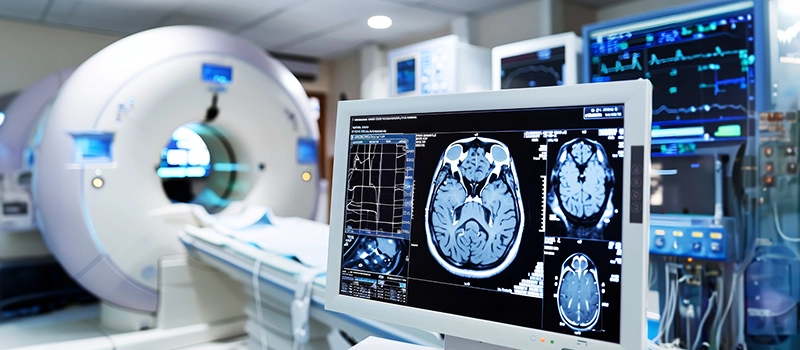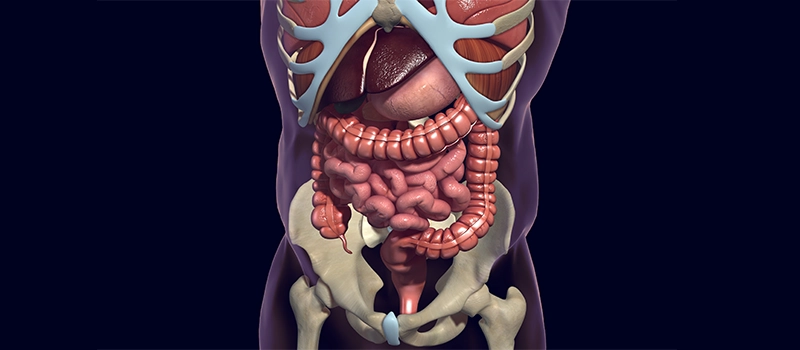
Best Books for MBBS 3rd Year
The subjects included in the 3rd year of the MBBS curriculum are Community Medicine, Forensic Medicine & Toxicology, Otorhinolaryngology, and Ophthalmology.
To stay informed on the most recent developments in the field and newly added chapters and modules in accordance with the new CBME pattern, all students must refer to the latest edition of the books while studying.
There are many books available in the market, but choosing the right one is essential. One must pick a standard book that is written clearly, has plenty of illustrations, flowcharts, tables, must-know information, questions with explanations, and most importantly, is based on the new CBME pattern.
Here’s a list of recommended books for MBBS 3rd Year students:
Best Books for Community Medicine (PSM)
| Subject: Community Medicine | Authors | Description |
| DK Taneja’s Health Policies & Programmes in India | Bratati Banerjee |
✓ The book is precisely updated and easy to understand. ✓ The latest edition is updated with the changes in the magnitude of the problems and strategies implemented to control them. ✓ To provide a complete and holistic view of the programmes, this version has been revised in a new structure with five distinct components. ✓ It is a distinctive collection of policies on Health, Family Welfare, Nutrition, and National Programmes. ✓ The chapter on the Reproductive, Maternal, Newborn, Child, and Adolescent Health Program includes a detailed discussion of the vaccination programme, including information on the MR Campaign, Intensified Mission Indradhanush, and newly introduced vaccines. ✓ National Strategic Plans (NSP) formulated for three main communicable disease programmes, namely NSP 2017-22 for malaria, NSP 2017-24 for HIV/AIDS and STIs, and NSP 2017-25 for tuberculosis are also described in the book. ✓ The book includes information on the recently introduced National Programme for Control of Blindness and Visual Impairment (NPCB), and the modified definition of blindness. |
| Mahajan’s Methods in Biostatistics for Medical Students and Research Workers | Bratati Banerjee |
✓ Methods of medical data collection and the tools used for the purpose, have been explained in detail for both quantitative and qualitative data. ✓ Determination of sample size and nonprobability sampling techniques have been explained. ✓ Commonly used terms in probability have been listed and defined. ✓ Choice of test of significance for different situations, according to the type of data involved has been explained simply in the form of tables. ✓ Hierarchy of epidemiological research studies has been discussed in detail. ✓ All tables have been revised and some tables are added based on the most recent data, i.e., Census 2011 and SRS 2017. ✓ Basics of Excel have been explained. ✓ Logistic regression analysis using SPSS has been discussed in detail |
| Review of Preventive & Social Medicine | Vivek Jain |
✓ Key revision points are provided next to each topic for ‘Must-know’ MCQ facts. ✓ Chapterwise IBQs with explanations are included. ✓ Solved MCQ papers (2012-2022). ✓ The book has an updated compilation of Public Health Statistics of India 2022-2023. ✓ The book follows the examination pattern chapter wise focusing on Concept Building, one-liner approach, wider coverage, value and approach-based MCQs, IBQs, and updated golden points. |
| Community Medicine with Recent Advances | AH Suryakantha |
✓ Highly illustrative flowcharts, diagrams, pictures, and tables. ✓ Fully adheres to the syllabus recommended by the NMC. ✓ Gives researchers ideas for how to work on disease prevention and health promotion, ultimately benefiting humanity. ✓ The updated edition focuses on the topics, including Verbal autopsy, infections connected to healthcare, first- and second-line ARV regimens, postexposure prophylaxis for HIV, prophylaxis for opportunistic infections, methods for cancer prevention, and cancer registry, national guidelines on infant and young child feeding, Bhore Committee report, revised MCP card maternal mortality audit, sentinel surveillance, and PCPNDT Act – 1994. ✓ The book is highly useful for medical students, medical officers, health professionals, and policymakers. |
| Park’s Textbook of Preventive and Social Medicine | K Park |
✓ Simple and easy to understand. ✓ Updated content and includes the recent advances in the field. ✓ The subjects have been updated and new topics have been included, such as COVID-19-related concerns and new 2019 processes for treating leprosy, malaria, dengue, hepatitis, HIV/AIDS, and other diseases. ✓ Updated information is provided on infant and maternal mortality, juvenile violence, mental health, fake medicines, and essential medicines. ✓ Includes cutting-edge information on non-communicable diseases as well as updated and enhanced content on accidents and illnesses like cancer. ✓ Topics related to immunization and the cold chain have been added. ✓ Contain details on the recently established Health and Wellness Centers and a few active health initiatives. ✓ The chapter on Demography in the Park textbook of community medicine is flawlessly edited and rewritten. |
| Mahajan and Gupta Textbook of Community Medicine | BK Mahajan, Rabindra Nath Roy, Indranil Saha and MC Gupta |
✓ The latest edition includes revised chapters on epidemiology, communicable and non-communicable diseases, MCH and family planning, management, demography and vital statistics, disaster, biomedical waste management, food and nutrition, immunization, geriatrics, communication, etc. ✓ Additionally, the National Health Programs have undergone a thorough review and modification along with the most recent SRS and census statistics. ✓ With examples and reasoning, many domains that are significant for the MBBS examination’s theoretical, practical, and viva have been mentioned. ✓ A lot of postgraduate study resources also include referrals for additional reading. ✓ For ease of comprehension, many flow charts, diagrams, and illustrations have been included. |
Best Books for Forensic Medicine & Toxicology (FMT)
| Subject: Forensic Medicine & Toxicology | Authors | Description |
| Review of Forensic Medicine and Toxicology | Gautam Biswas |
✓ Competencies are stated at the start of each topic in full colour. ✓ Every chapter has been updated and edited, and some new chapters and subjects have been introduced in accordance with the requirements in the latest edition of the book. ✓ Learning Objectives are the first section of each chapter, followed by “Must know” information “and “Nice to know.” ✓ In this book, the “magic bullet” section is provided to quickly review the topic. ✓ Line diagrams, boxes, tables, distinctions, and flowcharts are used frequently to enhance the text. ✓ Important details marked as “Pearls” are helpful for viva and multiple-choice questions. ✓ For improved comprehension, creative “image-based questions” have been included in the text. ✓ Key takeaways from the chapter are summarised in “High-yield,” which also offers a summary of the chapter. ✓ To pique interest, a case report has been added at the end of the chapter. |
| Recent Advances in Forensic Medicine and Toxicology (Volume-1 and 2) | Gautam Biswas |
✓ Section I is Medical Jurisprudence, which discusses fundamental ideas at the intersection of law and medicine as well as legal and ethical challenges. ✓ Section II is Clinical Forensic Medicine, which will operate as a helpful practical manual for daily medicolegal practice. ✓ Section III is Forensic Pathology. Topics covered include post-autopsy reconstruction, dyadic fatalities, fat embolism, tattoos, sudden newborn death syndrome, and judicial hanging.
✓ Section I titled Medical Jurisprudence, discusses legal, ethical, and fundamental themes at the intersection of medicine and law. ✓ Section II covers Clinical Forensic Medicine which will operate as a helpful practical manual for daily medicolegal practice. ✓ Section III is Forensic Pathology which explores the ideas, challenges, and potential developments in the field. ✓ Section IV covers Forensic Anthropology. ✓ Section V covers Forensic Science.
✓ Book’s writing style is quite simple and succinct. ✓ Well-illustrated using colour photos, diagrams, text boxes, tables, and flowcharts to highlight important details and ensure that concepts are communicated clearly. ✓ The emphasis of the book is on the scientific and practical elements of the several specialties within the broad subject of forensic medicine and toxicology. |
| The Essentials of Forensic Medicine and Toxicology | KS Narayan Reddy and OP Murty |
✓ The text highlights important ideas. ✓ Improvements in laboratory research are incorporated in the content. ✓ It covers the ICMR’s standardized guidelines. ✓ It encompasses all facets of medicolegal issues. ✓ A number of subjects have been covered in depth, including forensic ballistics, regional injuries, anaesthesia and surgical fatalities, DNA fingerprinting, and blood stains. ✓ It includes images, tables, and line diagrams to aid with comprehension. |
| Manual of Practical Forensic Medicine and Toxicology | Gautam Biswas |
✓ 15 postmortem examination proformas, colour injury plates, and hypothetical case studies. ✓ Included are histopathological slides and toxicological samples. ✓ A special feature of this book is a separate course on “writing a case report (Project)” that will expose the brightest ideas in clinical forensic medicine. |
| Forensic Medicine | J Magendran |
✓ Illustrative case studies to help you comprehend the relevance of your studies in real-world situations and to enhance your interest in the subject. ✓ Before moving on to the next chapter, make sure you have fully absorbed the principles by answering the general questions and image-based questions at the end of each chapter. ✓ The offered spotters will aid in improving your visual recall for questions that include images in both PGME exams and UG practical exams. ✓ You can review the information all at once with the aid of the flowcharts provided under Chapter at a Glance. ✓ The last-minute tidbits are provided to help you review for the tests by providing often repeated points. |
| The Synopsis of Forensic Medicine and Toxicology | KS Narayan Reddy |
✓ Thoroughly updated and rewritten in accordance with the National Medical Commissions’ new competency-based curriculum (NMC). ✓ It includes essential points, tables, and drawings. ✓ It is intended to give a succinct, mostly practical overview of current forensic medicine instruction with special emphasis on India. |
Best Books for Otorhinolaryngology (ENT) in MBBS
| Subject: Otorhinolaryngology | Authors | Description |
| Self-Assessment & Review: ENT | Sakshi Arora Hans |
✓ More than 500 explanations for the most recent pattern questions. ✓ Detailed explanations of key questions from the AIIMS (2017-2000), PGI (2017-2000), All India (2012-2000), and state-specific exams. ✓ Color plates of significant diagrams and tools. ✓ There are four helpful appendices. ✓ Incorporates DNB and FMGE explanation questions as well. ✓ Separate boxes indicate the key points, mnemonics, and additional edge points. |
| Diseases of Ear, Nose and Throat: with Head & Neck Surgery | Mohan Bansal
|
✓ Details of the topic competencies are presented at the start of each chapter. ✓ Numerous case studies are integrated throughout the chapters, and the appendix contains more problem-based scenarios. ✓ Numerous coloured pictures aid in learning and memorising. ✓ The work highlights and incorporates clinical applications. ✓ After reading a section or chapter, students are expected to respond to a set of objectives (competencies), which encourages focused and attentive reading. |
| Self-Assessment and review of short subject, Ophthalmology, otorhinolaryngology (ENT) & Orthopaedics | Arvind Arora |
✓ For extensive review and final practice, the book also includes numerous diagrams, pictures, and solved problems from prior years. ✓ Short and concise content. ✓ The book is highly recommended for medical students preparing for numerous postgraduate medical admission exams. |
| Diseases of Ear, Nose & Throat
(& Head and Neck Surgery) |
PL Dhingra & Shruti Dhingra |
✓ To clarify the topics, new clinical images, diagrams, tables, and flowcharts have been included. ✓ The whiteboard lectures and movies that illustrate the surgical processes through animations are a special feature of the revised edition of the book. ✓ Text is written with a clinical focus and a problem-solving methodology. ✓ Mnemonics to help students studying for exams remember and repeat the material. ✓ Numerous MCQs may be solved with the use of quick review nuggets. |
| Practical ENT | Vikas Sinha |
✓ Clinically oriented. ✓ Highly recommended for revision. ✓ This book provides an in-depth look into clinical history taking, examination, case studies, tools, and surgical techniques. ✓ This book is primarily intended for undergraduate students, particularly those who are beginning their careers in ENT. ✓ A chapter called “Frequently Asked Questions” (FAQs) allows students to swiftly review material as they get ready for tests. |
| Colour Atlas of ENT Diagnosis | Tony R. Bull & John S. Almeyda
|
✓ The bullet style and pocket-size make it incredibly portable and user-friendly. ✓ This well-liked colour atlas serves as an easy-to-follow visual aid for diagnosing the whole spectrum of ENT problems. ✓ This edition’s review of examination procedures, which incorporates the most recent advancements in the area, followed by explanations of the tools, imaging, and diagnostic tests. ✓ High-quality images are accompanied by instructions for correctly diagnosing and treating each clinical issue. ✓ Expanded discussion of issues such as pediatric patient care, facial plastic surgery, and head and neck diseases. ✓ More than 660 images and graphics in high-quality full colour are used to illustrate important ideas. |
Best Books for Ophthalmology in MBBS
| Subject: Ophthalmology | Authors | Description |
| Clinical Cases in Glaucoma: An Evidence-Based Approach | Parul Ichhpujani & Shibal Bhartiya |
✓ The chapters provide an overview of ocular hypertension, investigational methodologies, and glaucoma diagnosis before describing various treatment options. ✓ To assist doctors in selecting the best course of treatment, potential surgical consequences are thoroughly described. ✓ The last part discusses glaucoma clinical trials. ✓ Learning is enhanced by clinical images, flowcharts, and patient management algorithms. ✓ It will also help with getting ready for clinical case presentations in various tests and exams. |
| Comprehensive Ophthalmology | AK Khurana |
✓ There are six sections in the text. Anatomy and Physiology of the Eye, Optics and Refraction, Diseases of the Eye and Ocular Adnexa, Ocular Therapeutics, and Systemic and Community Ophthalmology make up the first five parts. Practical Ophthalmology is covered in Section 6. ✓ The applicable applied anatomy and physiology is presented after each chapter’s CHAPTER OUTLINE, which lists the subjects addressed and the SUBJECT COMPETENCIES according to CBME competencies. ✓ Text is ordered in such a way as to be simple to comprehend, remember, and reproduce. ✓ For easy revision, the text includes boldface, italics, headers at different levels, and headings altogether. ✓ Illustrations are made out of sterile photos and simple line drawings. ✓ Procedures for significant surgical methods are described in the respective chapters. ✓ Tables and flowcharts are used to emphasize key ideas. ✓ Review of Ophthalmology has been provided as a three-part ONLINE RESOURCE for self-evaluation and preparation of postgraduate admission tests. ✓ There are three parts, Part A: Multiple-Choice Questions and a Quick Text Review, Part B: Clinical Skill Videos and Part C: Surgical Videos. |
| Expert Techniques in Ophthalmic Surgery | Parul Ichhpujani, George L. Spaeth & Myron Yanoff |
✓ This book serves as both a textbook and an atlas. ✓ It offers characteristics compatible with contemporary ophthalmology teaching and a very visual format, including graphics and photos. ✓ There are many lists and boxes with bullet points throughout the content, making it easier to find information quickly than in a typical textbook. ✓ For convenient cross-referencing and “navigation,” each part is colour-coded. To improve surgical knowledge and anatomy, operational procedures and surgical tactics are described in detail in each area. ✓ An additional strength of the book is its part on the moral and legal ramifications of surgical practice. |
| Gonioscopy: A Text and Atlas | Talvir Sidhu & Tanuj Dada |
✓ More than 600 images in the atlas provide readers with a comprehensive grasp of the illness process. ✓ A separate section is dedicated to RetCam gonioscopy, intraoperative gonioscopy, and gonioscopy following glaucoma surgery, including minimally invasive glaucoma surgery. ✓ Self-assessment questionnaire is also provided. |
| Self-Assessment and Review of Ophthalmology | Sudha Seetharam |
✓ Solved Previous years’ questions with a precise explanation. ✓ Important points are highlighted with superscript Q. ✓ Includes Golden points for NEET-PG. ✓ Case-based IBQs. ✓ Includes highly illustrative diagrams. ✓ At the end of each chapter, IBQs are given with the key points for the identification of the images. |
| Clinical Methods in Ophthalmology: A Practical Manual for Undergraduates | Dadapeer K |
✓ Taking a case-specific history and completing a clinically crafted questionnaire. ✓ A thorough case discussion that includes an explanation of the clinical issues. ✓ Complete coverage with a focus on clinical relevance. ✓ A clear and user-friendly manual to help ophthalmology course students rapidly comprehend important concepts and efficiently prepare for exams. ✓ For improved clinical learning, important details and responses are underlined in coloured boxes. ✓ There has been an addition of a new chapter on community ophthalmology. |
To get conceptual clarity on MBBS courses online, click here
Related post


















































